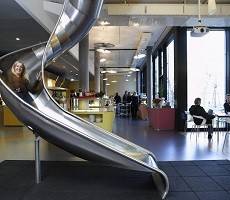May 13, 2016
Graduates want meaningful work and a fully digitised workplace 0
 Millennials entering the workforce want employment that offers meaningful work, ongoing learning opportunities and a fun workplace culture. This is according to a new study by Accenture on the workforce of the future which reveals that new graduates are increasingly digital, embracing new technologies, both to find work and on the job. The fourth annual Accenture Strategy 2016 U.S. College Graduate Employment Study found that the majority (70 percent) would rather work at a company that provides an employee experience built on a positive social atmosphere and receive a lower salary – up 10 percent on last year’s graduating class. Almost all (92 percent) of 2016 graduates said it is important to be employed at a company that demonstrates social responsibility. They are also three times as likely to prefer to work for a small or medium-sized company (44 percent), versus a large company (14 percent), indicating their preference for a smaller team environment.
Millennials entering the workforce want employment that offers meaningful work, ongoing learning opportunities and a fun workplace culture. This is according to a new study by Accenture on the workforce of the future which reveals that new graduates are increasingly digital, embracing new technologies, both to find work and on the job. The fourth annual Accenture Strategy 2016 U.S. College Graduate Employment Study found that the majority (70 percent) would rather work at a company that provides an employee experience built on a positive social atmosphere and receive a lower salary – up 10 percent on last year’s graduating class. Almost all (92 percent) of 2016 graduates said it is important to be employed at a company that demonstrates social responsibility. They are also three times as likely to prefer to work for a small or medium-sized company (44 percent), versus a large company (14 percent), indicating their preference for a smaller team environment.




































May 16, 2016
Women (and men) don’t enjoy the full wellbeing benefits of flexible working 0
by Dr Daniel Wheatley • Comment, Flexible working, Wellbeing
(more…)